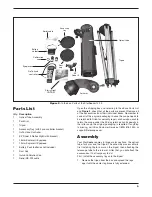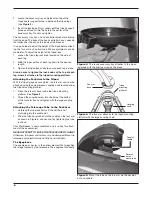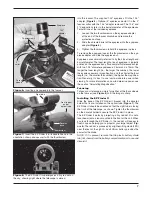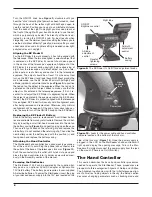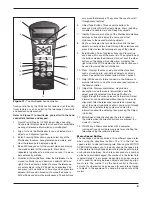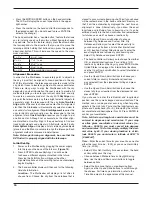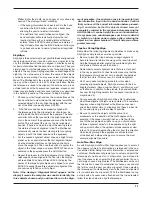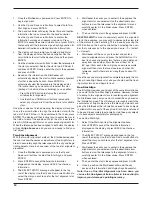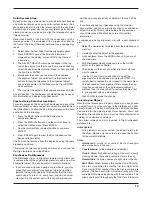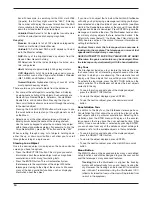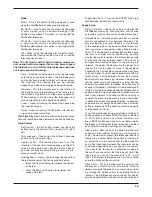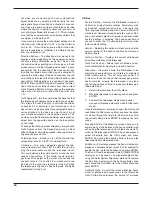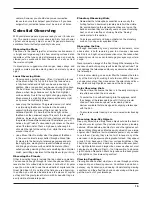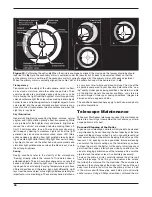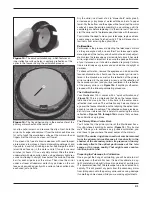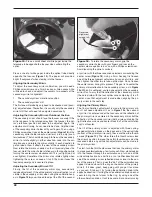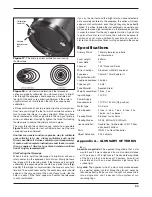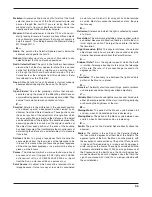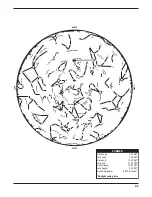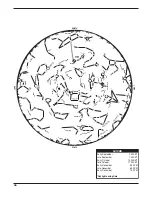
19
camera, however, you should always wear corrective
lenses to ensure the sharpest possible focus. If you have
astigmatism, corrective lenses must be worn at all times.
Celestial Observing
With your telescope set up, you are ready to use it for observ-
ing. This section covers visual observing hints for both solar
system and deep-sky objects as well as general observing
conditions that will affect your ability to observe.
Observing the Moon
The Moon is the ideal target for all amateur astronomers. It
is bright and large enough to show amazing surface detail,
regardless of the type or size of telescopic used, and can be
viewed just as successfully from the center of a city as from
the rural countryside.
Its broad plains, rugged mountain ranges, deep valleys, and
count less craters provide amazing views on almost any clear
night.
lunar Observing Hints
• Observe during partial phases. Often, it is tempting to look
at the Moon when it is full. At this time, the face we see
is fully illuminated and its light can be overpowering. In
addition, little or no contrast can be seen during this phase.
The best times to observe the Moon are during its partial
phases, when long shadows cast by the Sun highlight
surface details. Due to the sunlight’s changing angle, the
Moon presents a slightly different perspective every night
as it passes from phase to phase.
• Look along the terminator. The greatest amount of detail
is visible along the Moon’s terminator, the boundary
separating the lighted area of the lunar disk from the
darkened portion. It is here that the Sun’s light strikes
the Moon as the narrowest angle. This casts the longest
shadows, increasing contrast of lunar features and showing
the greatest three-dimensional relief. Sometimes you will
notice a bright "island" surrounded by darkness on the dark
side of the terminator. That’s a high peak, tall enough to
still catch the light of the setting Sun, while the lower terrain
around it does not.
• Use a Moon filter. No matter what the phase of the Moon
is, the view is almost always better through a Moon filter.
It screws into the barrel of a telescope eyepiece and cuts
the bright glare, making for more comfortable observing
and bringing out more surface detail. Some lunar filters,
called variable polarizing filters, act something like a dimmer
switch, permitting adjustment of the brightness to your liking.
Observing the Planets
Other fascinating targets include the five naked eye planets.
You can see Venus go through its lunar-like phases. Mars can
reveal a host of surface detail and one, if not both, of its polar
caps. You will be able to see the cloud belts of Jupiter and the
Great Red Spot (if it is visible at the time you are observing).
In addition, you will also be able to see the moons of Jupiter
as they orbit the giant planet. Saturn, with its beautiful rings, is
easily visible at moderate power.
Planetary Observing Hints
• Remember that atmospheric conditions are usually the
limiting factor on how much planetary detail will be visible.
So, avoid observing the planets when they are low on the
horizon or when they are directly over a source of radiating
heat, such as a rooftop or chimney. See the “Seeing”
section later in this section.
• To increase contrast and bring out detail on the planetary
surface, try using color eyepiece filters.
Observing the Sun
Although overlooked by many amateur astronomers, solar
observation is both rewarding and fun. However, because
the Sun is so bright, special precautions must be taken when
observing our star so as not to damage your eyes or your tele-
scope.
Never project an image of the Sun through the telescope. Tre-
mendous heat build-up may result inside the optical tube. This
can damage the telescope and/or any accessories attached to
the telescope.
For safe solar viewing, use a solar filter that reduces the inten-
sity of the Sun’s light, making it safe to view. With a filter you
can see sunspots as they move across the solar disk and facu-
lae, which are bright patches seen near the Sun’s edge.
Solar Observing Hints
• The best time to observe the Sun is in the early morning or
late afternoon when the air is cooler.
• To center the Sun without looking into the eyepiece, watch
the shadow of the telescope tube until it forms a circular
shadow. There are also special “solar viewing” finder
devices available that are designed for aligning a telescope
with the Sun.
• To ensure accurate tracking, be sure to select solar tracking
rate.
Observing Deep-Sky Objects
Deep-sky objects are simply those objects outside the bound-
aries of our solar system. They include star clusters, planetary
nebulae, diffuse nebulae, double stars and other galaxies out-
side our Milky Way galaxy. Most deep-sky objects have a large
angular size. Therefore, low-to-moderate power is all you need
to see them. Visually, they are too faint to reveal any of the
color seen in long exposure photographs. Instead, they appear
grayish. And, because of their low surface brightness, they
should be observed from a dark sky location whenever possi-
ble. Light pollution around large urban areas washes out most
nebulae making them difficult, if not impossible, to observe.
Light Pollution Reduction filters help reduce the background
sky brightness, thus increasing contrast.
Viewing Conditions
Viewing conditions affect what you can see through your tele-
scope during an observing session. Conditions include trans-
parency, sky illumination, and seeing. Understanding viewing
conditions and the effect they have on observing will help you
get the most out of your telescope.
Summary of Contents for 8993
Page 27: ...27 Appendix C Time Zones ...

